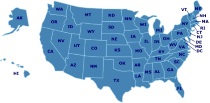Art
Find art museums, classes, and more in Minnesota. Learn how to teach art at home and explore wonderful resources to introduce every aspect of the fine arts to your child.
Things to See & Do
SOS Children's Villages - USA Family Dinner Time Art Contest
The Family Dinner Time Art Contest celebrates family dinner time and kicks off on Thanksgiving each year. Children may submit artwork of their family at dinner time to win a home computer. Artwork can be in any form, but must illustrate a family eating together. For sculptures and other difficult-to-ship items, please send a photo as opposed to the actual artwork.
A winner will be selected from each age group: preschool ages 1-7; grade school ages 8-12; and high school ages 13 -17.
The Minneapolis Institute of Arts
Explore the world of arts at the Minneapolis Institute of Arts.
Shankar's International Children's Competition (SICC)
K. Shankar Pillai (July 31, 1902–December 26, 1989) was a famous cartoonist. He brought out a political magazine called ‘Shankar’s Weekly’. Under the auspices of this magazine, a competition called the Shankar’s International Children’s Competition was organized in 1949. It invited paintings and writings from children in India. Children sent about 3,000 entries. The following year the competition was thrown open to children from all over the world.
Today, the competition has grown and about 1,60,000 entries are received from over 130 countries. The entries are judged by an international jury. The prizewinning entries are compiled in a volume called the ‘Shankar’s Children’s Art Number’. The competition is open to children all over the world below the age of 16 years. There is no entry fee and competitors are free to choose the theme/subject they are interested in, or like most, for their paintings/ drawings/writings.
Featured Resources
As an Amazon Associate, we earn from qualifying purchases. We get commissions for purchases made through links on this site.
Free to Learn: Introducing Steiner Waldorf Earkt Childhood Education
Free to Learn is a unique guide to the principles and methods of Steiner Waldorf Early Childhood education. The author draws on kindergarten experience from around the world, with stories, helpful insights, lively observations and pictures. This inspiring book will interest parents, educators, and early years education students. It is up to date, comprehensive, and contains many illustrations, including a 16-page color section. Lynne Oldfield invites you to explore Steiner Waldorf kindergarten...
Explode The Code
Explode The Code provides a sequential, systematic approach to phonics in which students blend sounds to build vocabulary and read words, phrases, sentences, and stories. Frequent review of previously learned concepts helps increase retention. Each workbook in this series contains exercises that incorporate reading, writing, matching and copying. The consistent format of the books helps facilitate independent work. This series includes primers—Get Ready for The Code, Get Set for The Code, and Go...
Five in a Row
Five in a Row provides a step-by-step, instructional guide using outstanding children's literature for children ages 4-8. Unit studies are built around each chosen book. There is a series for preschoolers called "Before Five in a Row," along with other volumes for older children.
Critical Thinking: Reading, Thinking, and Reasoning Skills
Based on Bloom's Taxonomy of Educational Objectives, Critical Thinking will allow students to garner more knowledge from new information by knowing, applying, analyzing, synthesizing, and evaluating. A brief review in each unit provides frequent indications of student mastery. This series is written for grade levels 1-6.
Designing Your Own Classical Curriculum: A Guide to Catholic Home Education
In this book, Laura Berquist offers a curriculum based on the philosophy of the classical Trivium: grammar, logic, and rhetoric. This valuable tools helps home educators craft a liberal arts curriculum that is good for both the soul and the intellect. The material in the book covers grades K-12 and has detailed and practical advice. There is also a section for a high school curriculum and a list of resources.


